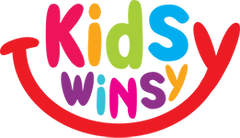
Importance Of Art And Craft In Early Childhood Education
Importance Of Art And Craft In Early Childhood Education
For a variety of reasons, art and craft instruction are crucial in early childhood education. They prioritise supporting young children's entire development. Children can enhance their cognitive talents, hone their motor skills, and explore their imaginations through creative activities. In addition to providing a means of self-expression, arts and crafts allow kids to convey their feelings even before they are verbally capable of doing so. This can increase their self-esteem and emotional intelligence, which are crucial for good social and emotional development.
Second, art and craft projects offer a chance for practical education. As a result of the fact that kids have to make decisions regarding the materials, colours, and patterns, they foster problem-solving, critical thinking, and decision-making. In addition, these exercises frequently involve maths and science concepts like geometry, measurement, and cause-and-effect linkages. Because of this, art and craft instruction in early childhood education not only fosters creativity but also helps children improve their cognitive and intellectual abilities, which can have a long-lasting effect on their whole educational experience. In essence, the value of art and craft in early childhood education resides in its capacity to support holistic growth, foster creativity, and foster a lifelong love of learning.
What is the Role of Art and Craft in Early Childhood Education
Early childhood education must include art and craft since they play a crucial part in a child's development on many levels. They first encourage originality and self-expression. Children develop their ability to think creatively, use their imagination, and express themselves visually through artistic endeavours. This enables kids to express themselves in special ways and fosters their individuality, ultimately leading to the development of identity and self-confidence. As kids choose materials, colours, and designs, they are also developing their analytical skills while solving problems and exercising critical thinking.
Activities involving art and crafts are also important for fostering fine motor abilities. Cutting, pasting, drawing, and painting all call for dexterity and control, two qualities necessary for a child's physical and intellectual development. Additionally, these exercises improve hand-eye coordination and foster the growth of dexterity and spatial awareness. Additionally, because collaborative endeavours are common in art and craft, kids can learn how to cooperate with people, share ideas, and build social skills. Encouraging creativity, enhancing fine motor skills, and promoting social development are all key functions of art and craft in early childhood education, making them essential instruments for well-rounded early learning.
When Should Art and Craft be Introduced in Early Education
As soon as a kid starts to interact with their environment, art and craft should be taught in early education. Children can benefit from basic, age-appropriate painting and craft activities as early as toddlerhood. These activities, which emphasise sensory exploration and may be adapted to each child's developmental stage, include finger painting and collage-making with secure, non-toxic materials. Introduced to art and craft during these formative years, children get early appreciation for creativity and self-expression as well as fine motor abilities and sensory sensitivity.
Activities including art and craft should continue to be a significant component of children's education when they enter preschool and kindergarten. They can take part in more structured tasks at this point that encourage preschool craft for children to experiment with shapes, colours, and textures. In addition to encouraging creativity, these activities also aid in children's social and cognitive growth by teaching them how to cooperate, follow directions, and solve problems. We set the groundwork for a lifetime of appreciation of the arts by incorporating art and craft into early education and by encouraging important developmental skills.
Benefits of Art and Craft in Early Childhood Education
Early childhood education's use of art and craft has several advantages that support a child's entire development. First of all, these pursuits encourage originality and self-expression. Children get the chance to use their imagination, play around with materials, activity kit, colours, and shapes, and express themselves graphically. In addition to encouraging originality, this also increases children's self-esteem and confidence as they take delight in their artistic achievements.
Second, engaging in arts and crafts activities improves cognitive and fine motor development. Hand-eye coordination and dexterity are improved by using art tools like paintbrushes, crayons, and scissors, as well as by cutting, pasting, and painting. Additionally, these exercises frequently involve maths, physics, and problem-solving components, encouraging analytical thinking and decision-making abilities. Children who participate in art and craft projects are also encouraged to practise patience and persistence because they frequently need to follow a set of instructions in order to accomplish a task. Last but not least, because they are naturally entertaining and can open doors to learning about a variety of topics and ideas, these activities can encourage a love of learning.
Frequently Asked Questions
Q1. How can craft accessories enhance the overall crafting experience?
A. Crafting is improved by adding extra efficiency, accuracy, and originality through the use of specialised tools, high-quality supplies, and organisational tools. Crafters can concentrate on their artistic vision and produce greater results when using these tools since they are convenient, enhance the quality of finished items, and make the process more pleasurable.
Q2. What are the advantages of shopping for craft supplies online?
A. Online craft supply stores provide convenience, a huge selection, and affordable costs. Access to niche items, simple product comparison, and convenient doorstep delivery are all made possible. When compared to in-store buying, online reviews and tutorials help consumers make more educated decisions while consuming less time and energy.




